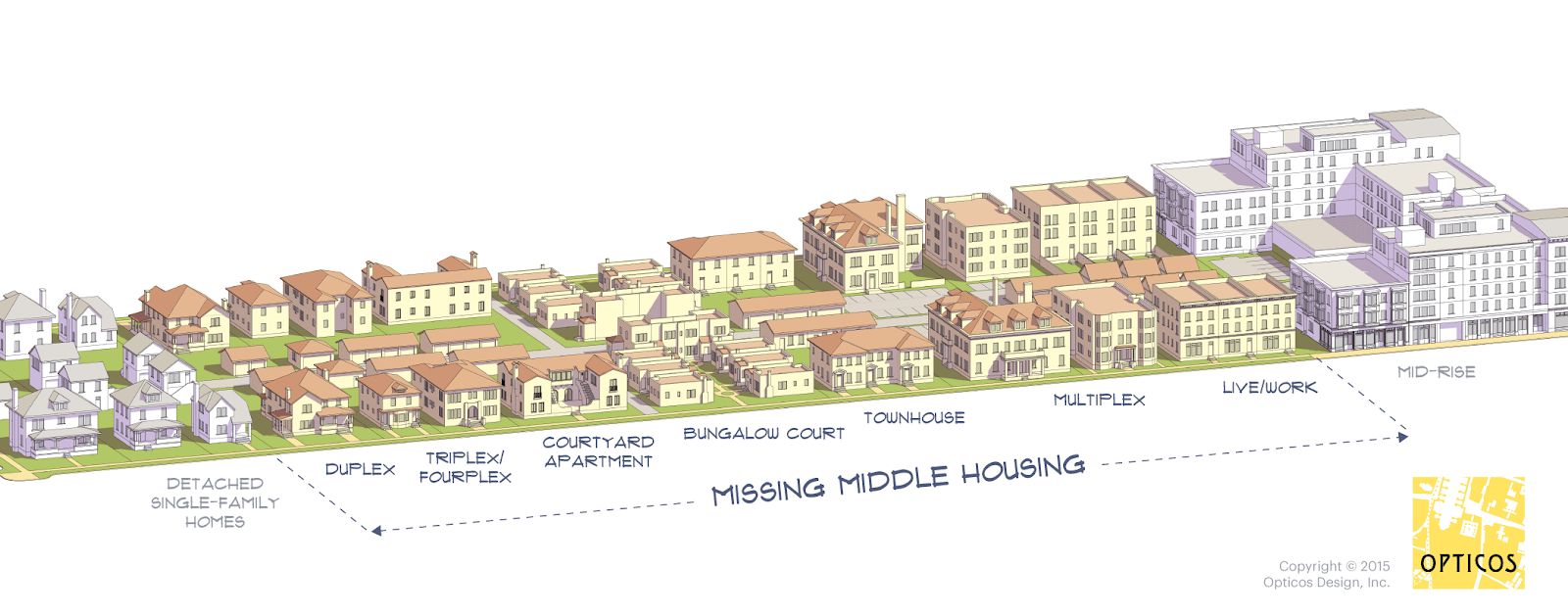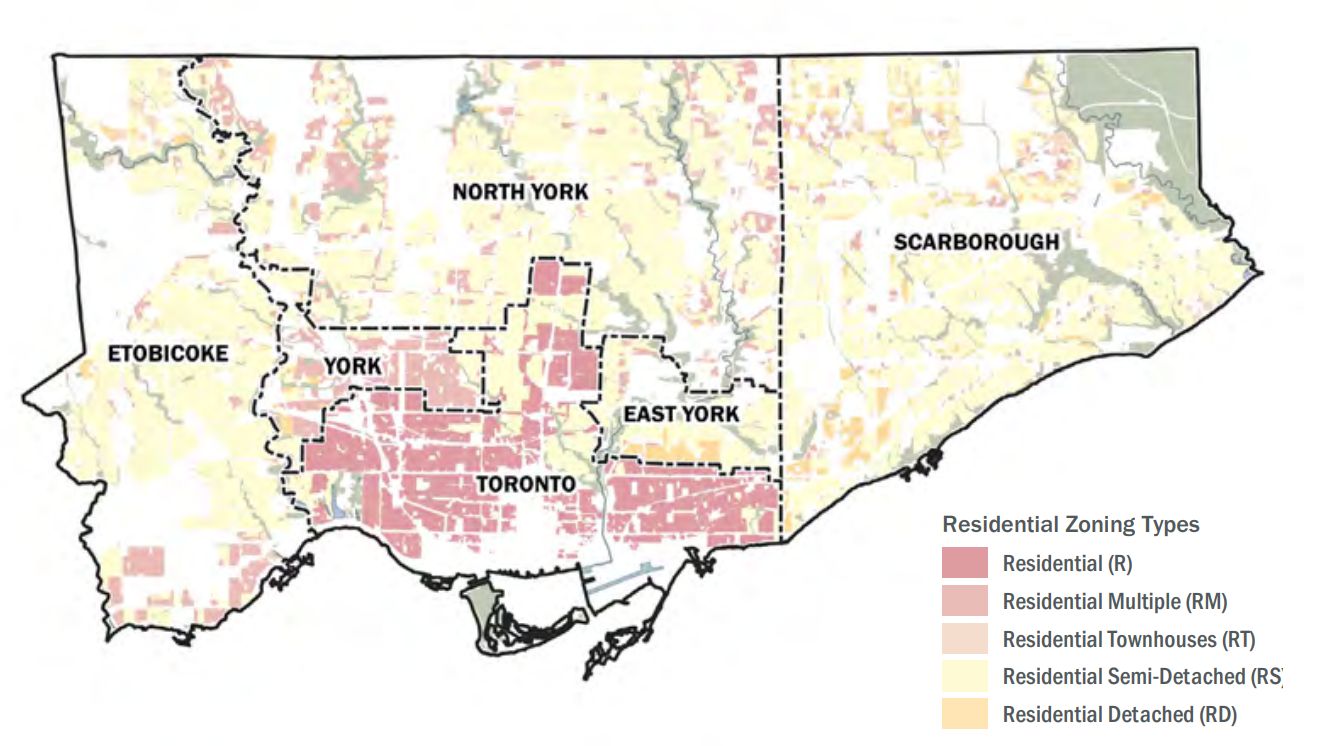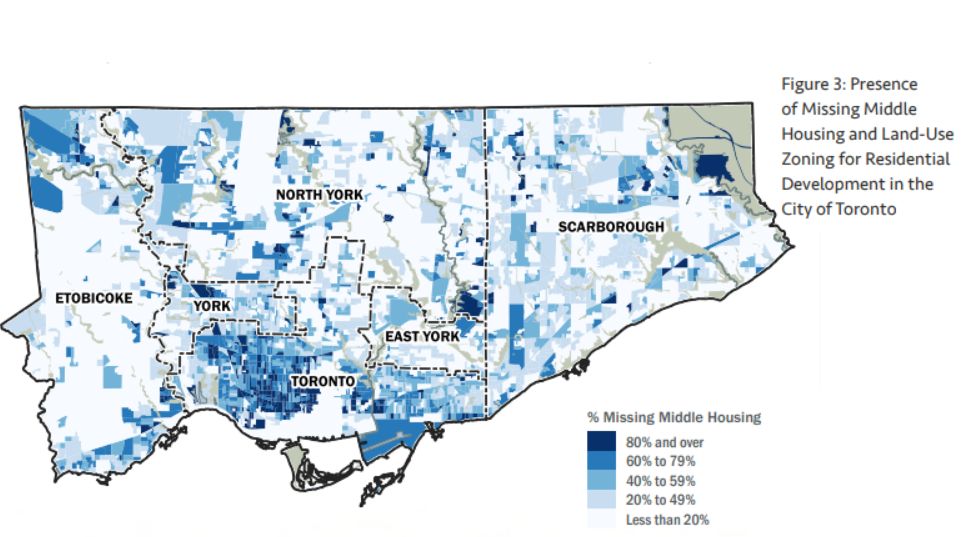What is “missing middle housing” when it comes to housing? This term “missing middle housing” was coined by the architect Daniel Parolek to describe “ a range of multi-unit or clustered housing types compatible in scale with single-family homes that help meet the growing demand for walkable urban living.”
These housing types include:

Duplexes are sometimes confused with a “twin home”, a duplex actually has a lot line running through the common wall so on each side it is actually an individual home and lot even though they are connected.
Triplexes and Fourplexes are similar but true to the name, come in threes or fours respectively. You can take a look at the mini-chart for and idea as to what these complexes look like.
Laneway House is a form of a detached secondary suite. These homes are typically built into pre-existing lots, usually in the backyard and opening onto a back lane.
Stacked Townhomes are another type. They are exactly what they sound like. They are stacked units. Residents will have the advantage of a house-like layout but the entire complex is structured like a condominium
Courtesy of missingmiddlehousing.com
They are called missing because they have typically been illegal to build since the mid-1940s and “Middle” because they sit in the middle of a spectrum between detached single-family homes and mid-rise to high-rise apartment buildings in terms of form, scale, number of units, and affordability. Whenever I travel around the world, I am always interested in the types of housing they have in different countries. I can’t help but compare them to Canada’s. I often end up blaming the government or developers for not being able to provide Canada with similar housing. Many Canadians, including myself, complain that condos are too small but houses are too big and expensive to live in. Luckily, the City of Toronto’s official plan directs new development to encompass 25% of city lands to be used for “Missing Middle Housing”
Those areas are designated as Avenues, Employment Areas, Centres, and the Downtown and Central Waterfront. These designations identify Urban Growth Centres in Toronto’s Downtown and Centres, provide policies for the designation and protection of employment areas, and indicate that these areas can be targeted for growth and intensificationThanks to this new implementation, we will be seeing more stacked townhomes coming up. Graphs courtesy of Evergreen and CUI


This means more upcoming affordable housing as they don’t have high maintenance fees and have less consumption of land. This will most likely be the perfect housing solution for a lot of middle-income families in the GTA! By prioritizing gentle population density and solving the missing middle housing crisis, Toronto can hopefully create affordability within the housing market.
